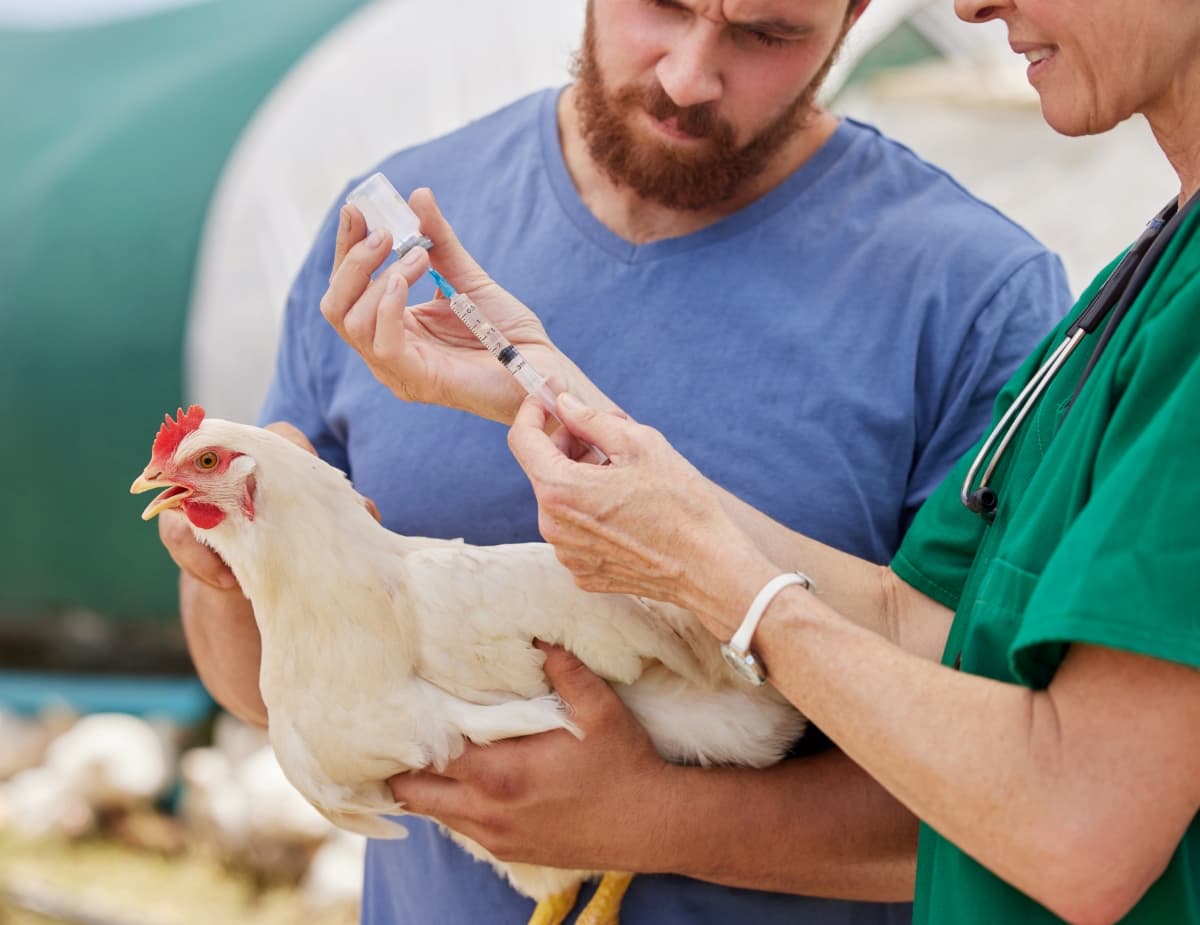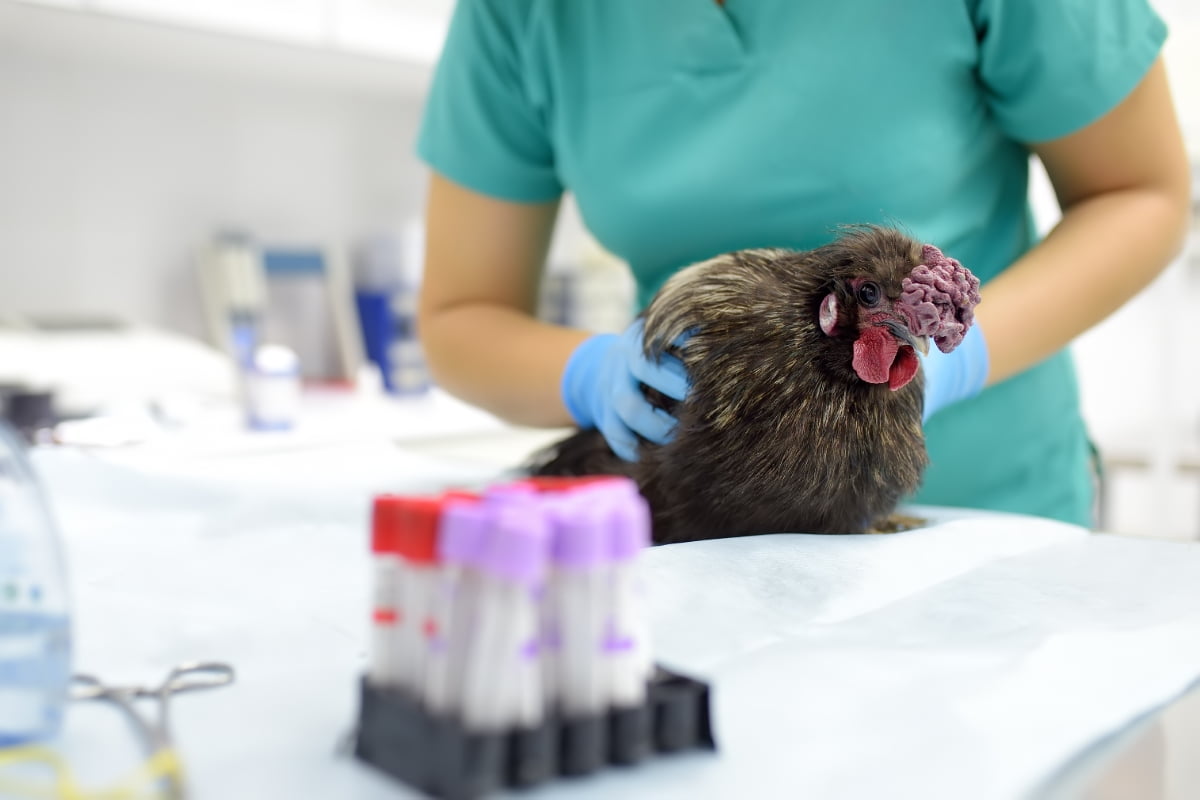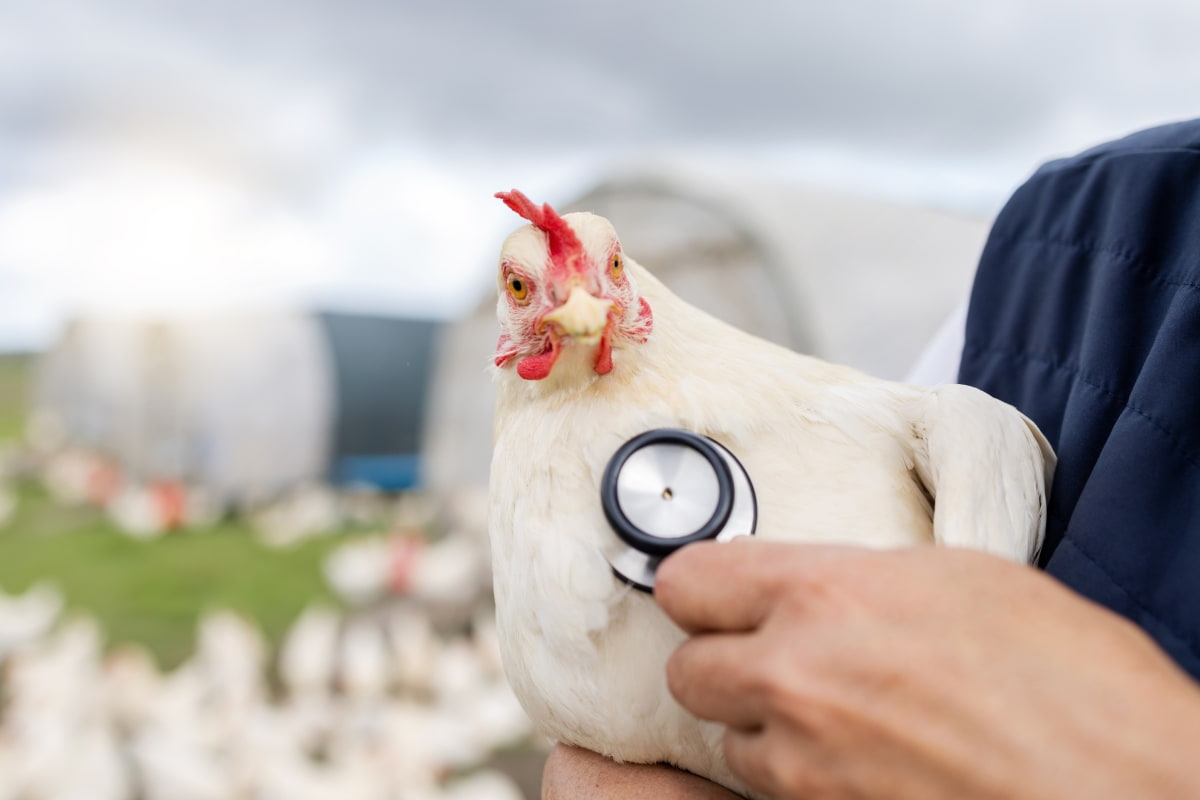In poultry farming, bacterial diseases pose significant challenges, impacting both the health of the birds and the productivity of the farm. Understanding the diagnosis, symptoms, treatment, and control measures for these diseases is crucial for poultry farmers to maintain a healthy flock and prevent economic losses. This comprehensive guide will explore common bacterial diseases in poultry, providing valuable insights into identifying, managing, and mitigating the impact of these infections on poultry farms.

Bacterial Diseases in Poultry
Salmonellosis
- Epidemiology: Salmonellosis is a common bacterial disease in poultry caused by various strains of Salmonella. It can spread through contaminated feed, water, and carrier birds, leading to significant economic losses.
- Symptoms and Clinical Signs: Infected birds may exhibit symptoms such as diarrhea, decreased egg production, lethargy, and respiratory distress. Mortality rates can be high if the disease is severe.
- Diagnosis: Diagnosis of salmonellosis involves laboratory tests to identify the presence of Salmonella in fecal samples or internal organs of affected birds.
- Treatment and Control: Control measures include strict biosecurity protocols, hygiene management, and vaccination. Antibiotic therapy may be necessary in severe outbreaks.
Colibacillosis (E. coli Infections)
- Pathogenic Mechanisms: Colibacillosis is caused by pathogenic strains of Escherichia coli (E. coli) and can affect multiple organ systems, leading to septicemia and localized infections.
- Clinical Manifestations: Clinical signs of colibacillosis include respiratory distress, pericarditis, swollen joints, and omphalitis in young chicks.
- Prevention and Management Strategies: Preventive measures involve maintaining clean drinking water, minimizing stress factors, and avoiding overcrowding. Management strategies include probiotic supplementation and the use of competitive exclusion products to control E. coli populations.
- Antibiotic Resistance Issues: Addressing antibiotic resistance in E. coli infections requires prudent use of antibiotics and adherence to veterinary guidelines.
Mycoplasmosis
- Types of Mycoplasma in Poultry: Mycoplasma gallisepticum and Mycoplasma synoviae are common pathogens causing respiratory and joint infections in poultry.
- Transmission and Spread: Mycoplasma infections can spread through direct contact, aerosols, and contaminated fomites, leading to chronic respiratory disease and infectious synovitis.
- Clinical Features and Diagnosis: Clinical signs include respiratory distress, nasal discharge, and lameness. Diagnosis involves serological testing and molecular techniques.
- Control Measures and Vaccination: Biosecurity measures, depopulation, and vaccination are key strategies for controlling and preventing mycoplasmosis in poultry flocks.
In case you missed it: Ultimate Guide to Poultry Viral Diseases: Diagnosis, Symptoms, Treatment, and Control

Pasteurellosis (Fowl Cholera)
- Causative Agent and Pathogenicity: Pasteurella multocida is the primary causative agent of fowl cholera, causing septicemia, respiratory disease, and localized infections.
- Signs and Diagnosis: Clinical signs of fowl cholera include sudden death, respiratory distress, swollen wattles, and cyanosis. Postmortem examination and bacterial isolation aid in diagnosis.
- Prevention, Vaccination, and Treatment: Preventive measures involve biosecurity, rodent control, and vaccination. Antibiotic therapy may be necessary in affected birds.
Clostridial Diseases
- Botulism: Botulism in poultry is caused by Clostridium botulinum and can result from ingestion of contaminated feed, water, or carcasses.
- Causes and Transmission: Clostridial diseases like botulism and necrotic enteritis can spread through the ingestion of spores, leading to neurotoxicity and intestinal damage.
- Clinical Signs and Treatment: Clinical signs of botulism include paralysis and muscle weakness. Treatment involves supportive care and the use of antitoxins.
- Necrotic Enteritis: The pathogenesis of necrotic enteritis involves the overgrowth of Clostridium perfringens in the intestinal tract, leading to necrosis and hemorrhage.
- Control and Prevention: Control measures for necrotic enteritis include dietary modifications, vaccination, and the use of antibiotic alternatives.
Staphylococcus
- Staphylococcus Species Affecting Poultry: Staphylococcus aureus and other Staphylococcus species can cause a range of infections in poultry, including dermatitis, osteomyelitis, and septicemia.
- Symptoms and Lesions: Clinical signs of staphylococcosis include abscesses, lameness, and dermatitis. Lesions may be observed in affected tissues.
- Management and Therapeutic Approaches: Management strategies involve hygiene, wound care, and antibiotic therapy when necessary.
Streptococcosis
Streptococcosis is a significant bacterial disease affecting poultry caused by various strains of Streptococcus. Understanding its impact, disease manifestation, diagnosis, and preventive measures is crucial for effective management and control.
Disease Manifestation: Streptococcosis in poultry presents in two primary forms: acute septicemic and chronic. The acute form is characterized by sudden onset, high mortality rates, and systemic infection, while the chronic form may lead to persistent, subclinical infections, impacting flock productivity.
Treatment and Preventive Measures: The treatment of streptococcosis involves antibiotic therapy, supportive care, and strict biosecurity measures. Preventive strategies include vaccination, hygiene management, and minimizing stress factors to reduce the risk of infection.
In case you missed it: Gout Management in Chicken: Disease Symptoms, Treatment, Diagnosis, and Prevention

Infectious Coryza
Infectious Coryza bacterial disease caused by Avibacterium paragallinarum, leading to respiratory infections in poultry. Understanding its etiology, clinical signs, diagnosis, and control strategies is essential for effective disease management.
Etiology and Epidemiology: Infectious Coryza is primarily transmitted through direct contact and contaminated fomites. It affects the upper respiratory tract, leading to nasal discharge, facial swelling, and reduced egg production. The disease can spread rapidly within a flock, impacting overall productivity.
Clinical Signs and Diagnosis: Clinical signs of Infectious Coryza include nasal discharge, facial edema, and conjunctivitis. Diagnosis involves laboratory testing to identify the presence of Avibacterium paragallinarum in affected birds.
Control Strategies and Biosecurity: Control measures for Infectious Coryza include strict biosecurity protocols, isolation of affected birds, and vaccination. Maintaining optimal hygiene and minimizing exposure to carrier birds are essential for preventing the spread of the disease within poultry flocks.
Campylobacteriosis
Campylobacteriosis is a zoonotic bacterial disease with implications for public health and food safety. Understanding its relevance, transmission dynamics, control, and eradication efforts is crucial for mitigating its impact.
Relevance to Public Health: Campylobacteriosis is a significant public health concern, as Campylobacter species can cause gastrointestinal infections in humans through the consumption of contaminated poultry products. Proper food safety measures and monitoring are essential for preventing human infections.
Transmission Dynamics in Poultry: Campylobacteriosis in poultry is primarily transmitted through the ingestion of contaminated water, feed, or contact with carrier birds. Understanding the transmission dynamics is crucial for implementing effective control measures, and preventing the spread of the disease within poultry flocks.
Control and Eradication Efforts: Efforts to control and eradicate Campylobacteriosis involve strict biosecurity measures, hygiene management, and monitoring of poultry flocks. Implementing measures to reduce the prevalence of Campylobacter in poultry products is essential for minimizing the risk of human infections.
In case you missed it: Colibacillosis Management In Chicken: Disease Symptoms, Treatment, Diagnosis, and Prevention

Conclusion
Effective management of bacterial diseases in poultry requires a combination of accurate diagnosis, timely treatment, and rigorous control measures. By implementing proper biosecurity practices and vaccination protocols, poultry farmers can minimize the spread of infections and ensure the health and welfare of their flock, leading to improved overall farm productivity.
- Deworming Schedule for Dogs/Puppies: A Beginners Guide
- How to Prevent and Control Parasites in Goats
- Beneficial Insects in Pest Management
- Natural Solutions for Pest Control in Flower Gardens
- Types of Fungicides Used in Agriculture
- Common Issues in the Fruit Development Stage of Pomegranate Farming
- Fruit Development Issues in Papaya: Easy Solutions and Treatment
- Soil-Borne Diseases and How to Protect Your Plants
- Practices to Prevent Disease Spread in the Garden